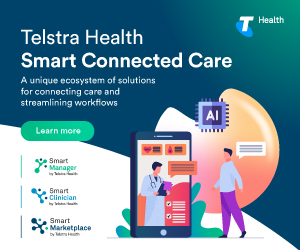Closing the gap on Indigenous health
Enabling better Indigenous healthcare remains a pressing issue in Australia, and the recent funding in the Federal Government Budget shows there’s a lot to be done in order to close the gap on Indigenous health.
In this article GP and MedicalDirector’s Chief Clinical Advisor, Dr Charlotte Middleton, uncovers how we can optimise Indigenous health outcomes, drawing on her years working at the Illawarra Aboriginal Medical Service in Wollongong.
Indigenous health stats are startling
Historically, Indigenous communities have struggled with chronic psychological and physical health conditions. In fact, it was not until 1837 that a policy of “protection” was enforced after decades of neglect and violence.
According to the Australian Institute of Welfare, Indigenous Australians suffer a 2.3 times greater rate of burden of disease than non-Indigenous Australians. And 19% of this disease burden could be attributable to mental health disorders.
In fact, between 2012-13, almost one-third (30%) of Indigenous adults were assessed as having high or very high levels of psychological distress. They were 2.7 times as likely as non-Indigenous adults to have these levels of psychological distress (based on age-standardised rates). These distress rates are even higher amongst Indigenous adults who had been removed from their family.
Meanwhile recent data released from the Heart Foundation revealed deaths Aboriginal and Torres Strait Islander people experience heart disease rates that are 70% higher than in non-Indigenous Australians and experience double the rate of hospitalisations due to heart attack and heart failure.
Recent Federal budget initiatives
To address the health deficit experienced by people living in remote and rural areas, the National Rural Health Alliance recently called for the urgent development of a new National Rural Health Strategy which is supported by robust health access
The Australian Government has also worked collaboratively with the Council Of Australian Governments (COAG) to implement a new strategy for ‘Closing the Gap’ on Indigenous Health. In the recent 2019-2020 Federal Budget, improving Indigenous health remains a key target of the new Closing the Gap framework, with funding boosted to $4.1 billion from 2019–20 to 2022–23 and more than $10 billion over a decade.
Meanwhile the Australian Health Program established by the Australian Government have invested $3.292 billion (GST exclusive) towards enhanced initiatives between from 2015-2016. This includes major funding streams towards primary health care, child and maternal health programs, stronger futures in the Northern Territory (Health; and programs covered by the Aboriginal and Torres Strait Islander Chronic Disease Fund.
Clinical care tips doctors can consider
As clinicians, if we’re serious about improving access to healthcare in Indigenous communities, we need to start with changing the way we engage and communicate with our patients. In 2012-13, 17% of Indigenous adults (an estimated 26, 500 people) reported to have avoided seeking health care, simply because they had been treated unfairly by doctors, nurses and staff.
Moving forward, there needs to be a real collaborative approach to addressing Indigenous health care. First, doctors would need to recognise the increased risk of conditions such as cardiovascular health, kidney disease and diabetes – plus any family history of mental health issues and addiction. By recognising and being proactive about preventive health, it enables us to enroll more Indigenous patients in the Closing the Gap scheme so that they have easier access to healthcare services and medications.
Medicare is a good place to start to identify exactly which health services the Indigenous Access Program covers. It’s also important to be aware of your local Aboriginal service and refer relevant patients there.
Immunisation is a widespread issue within Indigenous communities. GPs can take more proactive steps to improve Indigenous immunisation rates by educating patients (and parents of your children) about the importance of vaccination, increasing access to vaccination services and being aware of any Government funded initiatives and exemptions.
How technology can help
The biggest challenge for healthcare providers is being aware of how much work there still needs to be done to help enable better health outcomes in Indigenous communities.
Harnessing the potential of technology to enable ideal healthcare in Australia, is especially important for those living in rural and remote areas where access to healthcare and face-to-face patient-clinician consultations are harder to come by. For instance, telehealth technologies such as video consultations can help improve patient interactions, and distance no longer needs to impedes the delivery of care.
Other ways technology can help enable better Indigenous healthcare include:
- Sharing reliable health information such as HealthShare Factsheets
- Using cloud-based health software to manage patients on the go anywhere, anytime, such as MedicalDirector’s Helix
- Using electronic clinical and practice management software to manage patient immunisation
Taking a connected, patient-centric and personalised approach to Indigenous health, from pregnancy, to early childhood, through to adulthood and old age, means we can help support communities that are happier, healthier and more resilient. To build stronger Indigenous communities, we need to start by supporting young families every step of the way, being particularly mindful of the lifelong social, physical and emotional challenges that need to be overcome to enable better health outcomes.









